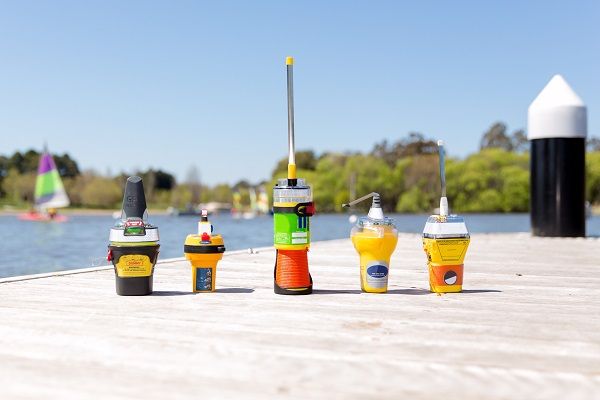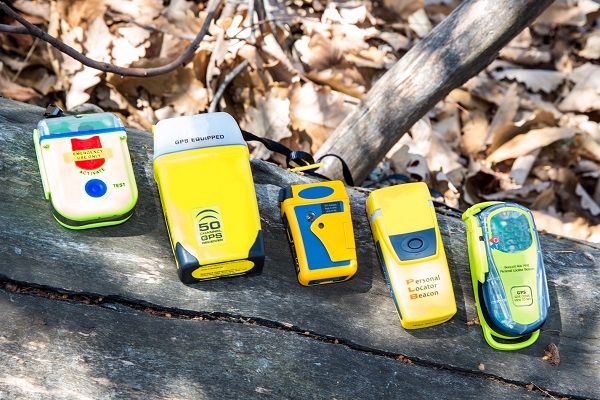Latest News
This summer’s absolute ‘MUST DO LIST’ for fishos, boaties and bush adventurers
Monday, 17 December 2018
We don’t always think about it, but there’s one thing we all want from a fishing trip - to come home safely to our friends and family with wonderful stories to tell!
One of the most important pieces of safety gear to help you achieve this is an emergency beacon.
But some of us have been getting small things about beacons wrong... and it’s costing lives. Allow me to elaborate.
Let’s say you’ve got all the safety gear sorted, you’ve checked the weather, told people your trip details, and you’re finally out enjoying another beloved fishing adventure. Then, all of a sudden something unexpected goes wrong – a rogue wave capsizes your boat, a mate’s boat cracks a transom and water starts flooding in, a snake bites your mate, or someone in your team has a heart attack. This is just a tiny list of what can and does happen to thousands of Australians every year.
Who you gonna call? Well it’s best if you can use your mobile phone or a VHF UHF radio etc... However, there are some emergencies when these options are not possible due to lack of signal or of course TIME! If that’s the case then the quickest way to get help is to set off an emergency beacon. There’s a handy guide on the side. The flick of a switch ANYWHERE in Australia sends a signal to the Australian Maritime Safety Authority (AMSA) and they organise a search and rescue to come to your aid! They will know your rough position or if your beacon is GPS-enabled, they will know your precise location so the search time is reduced significantly.
In most states and territories, boats going more than 2 nautical miles out to sea are required by law to take an EPIRB (Emergency Position Indicating Radio Beacon). Clever boaties carry one everywhere they venture. Furthermore, I have long carried the smaller PLB (Personal Locator Beacon) whenever I go bush walking or kayaking, especially in remote areas – this really does rest me at ease.
So you have a beacon, and every adult on board knows how to use it – where else can you go wrong?
REGISTER YOUR BEACON: All beacons must be registered with AMSA by law. Why? AMSA needs your details so if they get an alert they can respond as effectively as possible. Registration is free and is done online at www.amsa.gov.au/beacons. You must carry the confirmation of your registration – you can save the SMS, save the email, or carry a printed copy.
ALL the details in your rego are vital to ensure the best possible search and rescue response, including the phone numbers you provide. If you ever need to set off your beacon AMSA will call you on ALL the phone numbers you listed in your rego – one of the reasons for this is to check you haven’t set off your beacon accidentally (which wastes valuable search and rescue resources). I have my wife as one of the contacts as she knows more details of my whereabouts that can assist in an emergency.
UPDATE YOUR REGISTRATION: You need to update your details every 2 years or whenever they change. For example, it’s no good if rescue authorities are looking for your old boat when you’ve taken its associated EPIRB into a new boat. Conversely let’s say you’ve just brought a second hand boat that’s come with an EPIRB – you need to work with the previous owner to update the rego details. DON’T MUCK ABOUT - UPDATE YOUR DETAILS here: www.amsa.gov.au/beacons
STORE IT PROPERLY: Store your beacon in a safe location, away from anything or anyone that may accidentally activate it. But ensure it is easily accessible in the event of an emergency. Be careful not to get water activated beacons wet - you don’t want a visit from the rescue team while you’re cleaning your boat!
CHECK YOUR BATTERY EXPIRY: This can be found on the side of the beacon. You can’t rely on a beacon that has an expired battery, and don’t be fooled if the test light still operates past the expiry date.
Batteries MUST be replaced by the manufacturer or a certified agent. If you decide to buy a new one – don’t forget GPS is best. A GPS beacon used correctly will give your location within 120 metres. A beacon without GPS will give it within 5 kilometres.
DON’T BIN YOUR BEACON: A beacon thrown in a bin can still activate and send search and rescue authorities to your house or the rubbish tip, which is costly and takes them away from real emergencies.
To learn how to dispose of your beacon properly visit www.amsa.gov.au/beacons
PLAY IT SAFE THIS SUMMER: We all want search and rescue authorities available to help us in an emergency, not wasting time searching a house, a bin, or the tip! There’s many other examples of what can go wrong if you haven’t checked off the above list, but don’t let this daunt you – simply check things one step at a time, but please tend to them straight after reading this – which is right now.
See you on the water
Rob Paxevanos




